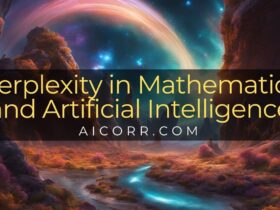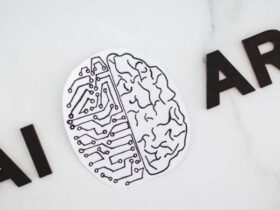We dive in the concept of meta learning in artificial intelligence (AI).
Table of Contents:
Meta Learning in AI
Meta-learning, often called “learning to learn,” represents a significant shift in artificial intelligence (AI) research. The focus is not just on teaching a model to solve a specific problem. But also, on teaching it how to adapt quickly to new tasks by leveraging prior knowledge. Instead of training a model solely for one task, meta-learning enables the model to generalise its learning across various tasks and rapidly acquire new knowledge, even with minimal data. This capacity for adaptation is particularly important. AI systems are deployed in complex and dynamic environments where learning from limited experiences is crucial.
Meta-learning has gained considerable attention in recent years. This is due to its potential to overcome several limitations of traditional machine learning approaches. In conventional machine learning, models are typically trained on large datasets and tailored for specific tasks. This in turn restricts their ability to generalise to new scenarios or adapt when faced with new challenges. Meta-learning, on the other hand, focuses on building systems. Systems that can efficiently learn new tasks by using knowledge gained from previously solved tasks. This is especially valuable in applications where data is scarce or costly to obtain, such as in healthcare, robotics, and personalised AI systems.
The Core Principles of Meta-Learning
Meta-learning operates on a different paradigm than traditional machine learning approaches. As such, making it more dynamic and capable of learning in diverse situations. Let’s dive into the key concepts that define meta-learning.
1. Task Distribution
Meta-learning frameworks are typically trained over a distribution of related tasks instead of being trained for just one specific task. The aim is for the model to extract and retain knowledge from these tasks. So, it can apply that knowledge to new, unseen tasks. This task distribution is central to the meta-learning approach, as it provides the necessary diversity to help the model generalise across different domains. For example, in image classification, the model might be trained on several datasets of different objects and then tested on a new set of objects. The goal is that it can quickly identify new objects with minimal data.
2. Meta-Learner and Base Learner
The architecture of meta-learning typically consists of two components: the meta-learner and the base learner.
- The Meta-Learner: This is the model responsible for learning how to learn. It operates on the level of learning strategies or algorithms and is designed to improve the learning process itself. Instead of focusing on solving specific tasks, the meta-learner finds patterns in how tasks are learned and optimises the base learner’s ability to solve new tasks.
- The Base Learner: The base learner is responsible for learning individual tasks, usually based on task-specific data. In a traditional machine learning framework, this would be the only component. However, in meta-learning, it is supported and guided by the meta-learner to ensure it adapts effectively to new tasks.
Together, these components work in tandem to enable fast adaptation and generalisation.
3. Few-Shot Learning
Few-shot learning is one of the most important applications of meta-learning. In this approach, the model is expected to learn and generalise from only a few labeled examples. This contrasts with traditional machine learning models that typically require thousands or even millions of labelled examples to achieve high performance. Few-shot learning is especially useful in domains like image recognition, medical diagnosis, and personalised recommendation systems. In which, labelled data is either rare or costly to obtain. Meta-learning enhances few-shot learning by equipping the model with a strong foundation of learning strategies. As sych, allowing it to make the most out of the limited data it receives.
Types of Meta-Learning Approaches
Different approaches to meta-learning focus on optimising various aspects of the learning process. We explore three main types of meta-learning approaches.
1. Optimisation-Based Meta-Learning
Optimisation-based meta-learning focuses on enhancing the learning process by modifying how models are optimised for new tasks. One of the most well-known algorithms in this category is Model-Agnostic Meta-Learning (MAML). MAML works by finding an optimal set of model parameters during meta-training that are close to good solutions for many tasks. When presented with a new task, the model can quickly adapt by making a few gradient updates to its parameters. The goal of MAML is to create a model that is highly adaptable. Even with very few examples or steps required to adjust the model’s parameters. This flexibility makes it particularly useful in few-shot learning scenarios and reinforcement learning.
2. Metric-Based Meta-Learning
Metric-based approaches rely on learning a similarity metric between examples. Instead of directly learning how to classify instances, these methods aim to create a space where the distance between examples of the same class is minimised. While the distance between examples of different classes is maximised. A popular example of this approach is Prototypical Networks. In which, each class is represented by a prototype (a single example that is the centroid of the class). When a new instance is introduced, the model classifies it based on the distance between the instance and the prototypes in the metric space. Metric-based approaches are particularly useful for few-shot learning tasks. As, they allow the model to generalise from just a few examples by leveraging the learned metric space.
3. Memory-Augmented Meta-Learning
In memory-augmented meta-learning, the model is equipped with an external memory that stores information about previous tasks. This memory can be accessed when learning new tasks, allowing the model to reuse relevant knowledge from past experiences. Neural Turing Machines (NTM) and Memory-Augmented Neural Networks (MANN) are examples of models that use external memory to improve their learning abilities. These models are particularly useful in reinforcement learning and sequential decision-making tasks. In which the model needs to store and recall important information about the environment.
How Meta Learning Works
The process of meta-learning can be broken down into two main stages: meta-training and meta-testing.
1. Meta-Training
In the meta-training phase, the model is exposed to a distribution of tasks, each with its own dataset. The goal during this phase is to train the meta-learner to learn general strategies that will enable fast adaptation when encountering new tasks. The meta-learner adjusts the parameters of the base learner. So that, for any task in the task distribution, the base learner can achieve high performance with only a small number of updates.
2. Meta-Testing
Once the meta-training phase is complete, the model is evaluated on unseen tasks during the meta-testing phase. The key difference between meta-testing and traditional testing in machine learning is that the model must quickly adapt to the new tasks using the knowledge gained during the meta-training phase. Typically, the model is given only a small number of labelled examples. And, it is expected to generalise efficiently, making meta-testing a true test of the model’s learning capabilities.
Benefits of Meta-Learning
Meta-learning offers several advantages over traditional machine learning approaches.
1. Adaptability
One of the most significant advantages of meta-learning is its ability to quickly adapt to new tasks with minimal data. This makes meta-learning especially useful in real-world applications. Where data availability is limited, such as in personalised AI systems, healthcare diagnostics, and robotics.
2. Efficiency
Meta-learning improves the efficiency of learning new tasks. Instead of needing to retrain the model from scratch for each new task, meta-learning allows the model to adapt using a few examples and minimal updates. As such, reducing both the time and computational resources required for training.
3. Generalisation
Meta-learning enhances generalisation across tasks. By training on a distribution of tasks, the model learns to apply its knowledge to a wide range of new tasks. Even those that differ significantly from those it was trained on. This makes meta-learning well-suited for dynamic environments where the model may encounter changing conditions or unexpected challenges.
Applications of Meta-Learning
Meta-learning has a wide range of applications across various domains. Let’s look at some of them below.
- Few-shot learning: In image classification, where the model learns to recognise new categories with only a few labeled examples.
- Reinforcement learning: Where agents need to quickly adapt to new environments and policies with minimal interaction data.
- Natural language processing (NLP): In tasks like language translation and sentiment analysis. Where the model must adapt to new languages, dialects, or contexts.
- Robotics: Where robots can adapt to new tasks or environments without requiring extensive retraining or data collection.
Our Final Thoughts
Meta-learning represents a paradigm shift in AI. It enables models to adapt quickly and efficiently to new tasks by leveraging prior experiences. By focusing on the ability to learn how to learn, meta-learning overcomes many of the limitations of traditional machine learning approaches. As such, making it particularly useful in real-world applications where data is scarce or environments are dynamic. As AI continues to evolve, meta-learning is likely to play a crucial role in creating systems. Systems that are not only capable of solving specific tasks but also of learning and adapting to an ever-changing world.












